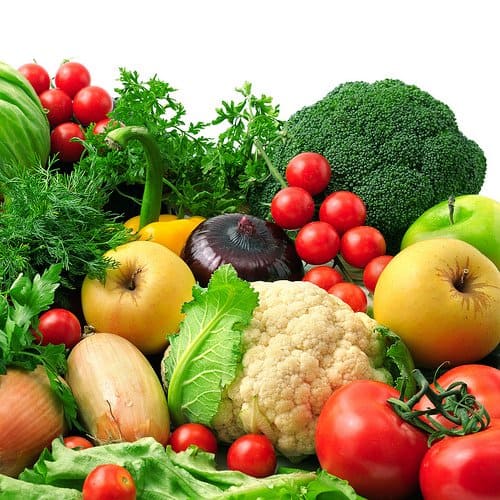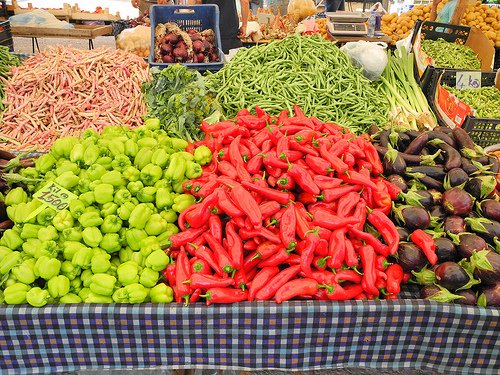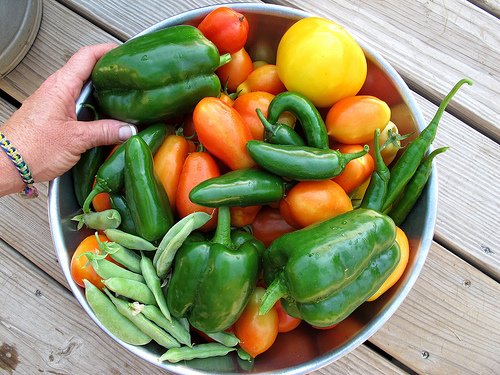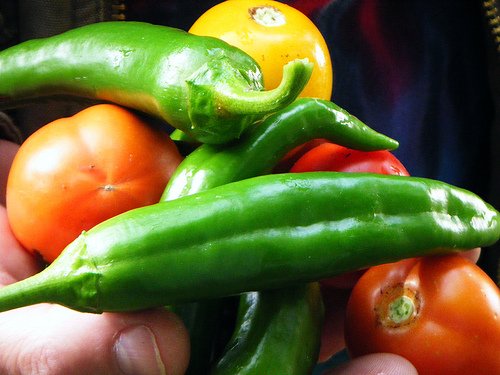Can you freeze fresh vegetables? Nothing like eating fresh vegetables on the daily but if you have too much of your favorite greens, freezing the rest can be a great idea too. Certain types of vegetables are great for freezing; there will be minimal texture or flavor changes. Usually, fibrous, hard or dense vegetables freeze so well.
However, delicate greens and starchy vegetables are a little tricky to keep in the freezer. Still, if you want to preserve the nutritional value of your favorite vegetables, freezing is your best bet. In addition, freezing vegetables takes more than just packing and sticking the veggies in the freezer. There are certain steps you need to take to keep rot and frost away. These steps include these techniques:

Flash Freezing the Vegetables
Flash freezing involves “shocking” or exposing the food to low temperature prior to freezing. This helps retain the freshness of the ingredients. Some vegetables tend to lose their crunchiness or fresh flavor when frozen and thawed. Through flash freezing, the vegetables won’t lose their crispiness and distinct green taste even when frozen and thawed.
To flash freeze the vegetables, place the washed and trimmed vegetables on a cookie sheet. Make sure the greens aren’t touching each other so they are easy to pull apart. Stick the cookie sheet in the freezer and let sit until frozen solid.
For larger vegetables, this should take two hours or so. For smaller vegetables, check every 30 minutes. If you are unsure if the veggies are frozen, cut a piece and see if the center is frozen.
Blanching the Vegetables
Blanching involves immersing fresh vegetables into a pot of boiling water – usually for a minute or two – then plunging the vegetables in an ice bath to stop the cooking process.
This technique is meant to prolong the freshness of the vegetables as well as add vibrancy to their natural color. Blanching helps kill the enzymes that cause the vegetables to ripen. The method helps preserve the vegetables at the peak of freshness prior to freezing.

To blanch the washed and trimmed vegetables, simmer a pot of boiling water. While waiting for the pot of water to simmer, prepare a large bowl of iced water then set aside.
Once the pot of water is boiling, place the vegetables in the pot using a slotted spoon or a colander. Give the vegetables at least 60 seconds to blanch or until the color of the veggies becomes brighter. Then, take the vegetables out of the pot and plunge into the ice water. Once completely cooled, the veggies are ready to be packed for freezing.
Now that you know two of the best techniques for prepping veggies for freezing, let’s take a look at the step by step guide on how can you freeze fresh vegetables:
How to Freeze Fresh Vegetables?
This is a general guide on how to freeze most types of fresh vegetables.
To start, select only the young and fresh vegetables then wash them thoroughly. With a knife, trim the veggies, remove the husk, peel the vegetables or cut in desired pieces, etc. Once the vegetables are washed and trimmed, you can choose to blanch or flash freeze first prior to freezing. Please refer to the instruction above for the blanching or flash freezing guide.
Once you are done flash freezing or blanching the fresh vegetables, pat the vegetables dry with paper towels. This is an extremely important part of freezing fresh vegetables. If you don’t pat the vegetables dry prior to freezing, ice crystals will form within the veggies. This will ruin the flavor and texture of the greens once they are defrosted!
After patting the vegetables dry, you can now pack the veggies for freezing. You can either use a large airtight container or resealable plastic bags to pack the veggies. Just place the vegetables into your preferred container then seal. Write the storage date then stick in the freezer. If you’re using a resealable plastic bag, it’s best to use the quart sized ones so you can divide the vegetables into manageable portions. This will make defrosting much easier.

Guidelines for Freezing Specific Vegetables
Freezing a certain type of vegetables? Don’t worry, we got you covered. Here are the basic guidelines on how to freeze some of the most commonly used fresh vegetables:
Zucchini
Just like asparagus, zucchini is a terrific vegetable for freezing because it doesn’t turn soggy or mushy once defrosted.
Carrots
Who doesn’t love carrots? Learn how to freeze carrots the right way by checking out our complete guide! Click here to get started.
Cabbage
Cabbage is a delicate vegetable so freezing it will require careful attention. Most types of green leafy vegetables are tricky to freeze so refer to this guide to get it right.
Celery
Celery is also a delicate vegetable so it’s a little tricky to freeze. But once done right, celery will keep fresh in the freezer for months.
Brussels Sprouts
Brussels sprouts keep so well in the freezer. Check out our guide on how can you freeze Brussels sprouts here.
Butternut Squash
It’s always a great idea to stock up on butternut especially during the colder season. Here is a step by step guide on how to prepare and pack butternut squash for freezing.
Bean Sprouts
Bean sprouts tend to lose their crispiness once frozen but our step by step guide will walk you through the proper way to freeze beans sprouts.

How to Defrost Fresh Vegetables?
There is no need to thaw frozen fresh vegetables if they’ll be used in cooking. They will thaw as they cook. This is great news if you’re making soups and stews – just chuck the frozen vegetables, and you’re done. However, there are certain dishes that do require the frozen vegetables to be defrosted. For instance, if you are making fresh salads, stir-frys, and hors d’oeuvre made from fresh veggies, you need to defrost the vegetables first.
Generally, you want to defrost the fresh vegetable slowly. That means, you just need to transfer the frozen vegetables from the freezer to the fridge. This goes especially for delicate vegetables such as green leafy vegetables and starchy vegetables. Leave the fresh vegetables to thaw for several hours to overnight. Once the vegetables are completely thawed, use as directed by the recipe!
Summary
Vegetables come in different varieties so there is no clear-cut freezing method that applies to all vegetables. Some vegetables require more care than others because they are more sensitive to temperature changes while others are hardier.
One secret to maintaining the freshness of the vegetables even after freezing and defrosting is to keep the temperature at a steady 0 degrees Fahrenheit. Of course, packing the vegetables properly prior to freezing is also important too!
We hope that this guide on how can you freeze fresh vegetables is a great help to you. For our full list on fresh vegetable freezing guides, please go here.